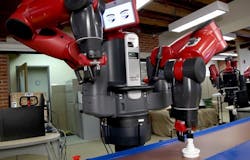Automation and Manufacturing Among the Most Disruptive
For much of our lives, we come to understand that being disruptive is not a good thing. During our school years, being disruptive could land us in all kinds of trouble. But in the business world, being disruptive can mean the difference between leading your industry or becoming one of its many followers.
Most mentions of “disruptive” companies usually focus on Silicon Valley innovators developing the latest and greatest computing technologies. But a recent list of the 50 most disruptive companies, published by MIT Technology Review, focused on what companies did over the past year to “strengthen their hold on a market, challenge the leaders of a market, or create a new market.”
This list contains quite a few companies whose names should be very familiar. Following is a list of well-known manufacturers and automation suppliers who made the list along with the reason(s) why they were selected.
• ABB was added to the list for its development of a circuit breaker for high-voltage dc lines—an important development in spreading the use of renewable energy.
• Audi made the list for its laser-scanning road detector that fits in a car’s front grille. This development brings the autonomous car closer to reality.
• Corning’s production of a new kind of thin, flexible, strong glass for touch screen devices helped gets its name on the “most disruptive” list.
• Dow Chemical’s commercialization of roof shingles containing photovoltaic materials drew the attention of MIT.
• GE’s new gas turbine for utilities using wind and solar that can ramp up quickly when greener power is not available helped add its name to the list.
• Novartis developed of a continuous drug manufacturing process that it claims can combine compounds quickly and in unique ways.
• Phillips made the list for its new LED light bulbs that can be controlled by smartphones and tablet computers.
• Siemens made the list for the development of batteries and wind technologies that are expected to play a major role in Germany’s plan to rely more heavily on renewable power.
• Toyota’s continuing progression on the Prius, in this case its plug-in version, helped it make the list.
Among the not so well-known names on the list in the manufacturing and automation industries are:
• Alta Devices was recognized for its flexible solar sheets which the military will use to provide portable power to drones and soldiers.
• Nest made the list for its thermostat which can learn users’ preferences and thereby maximize its efficiency.
• Rethink Robotics hit the list because its robots can work safely alongside humans.
See video below about how ABB’s HVDC breaker works.
About the Author
David Greenfield, editor in chief
Editor in Chief

Leaders relevant to this article:
